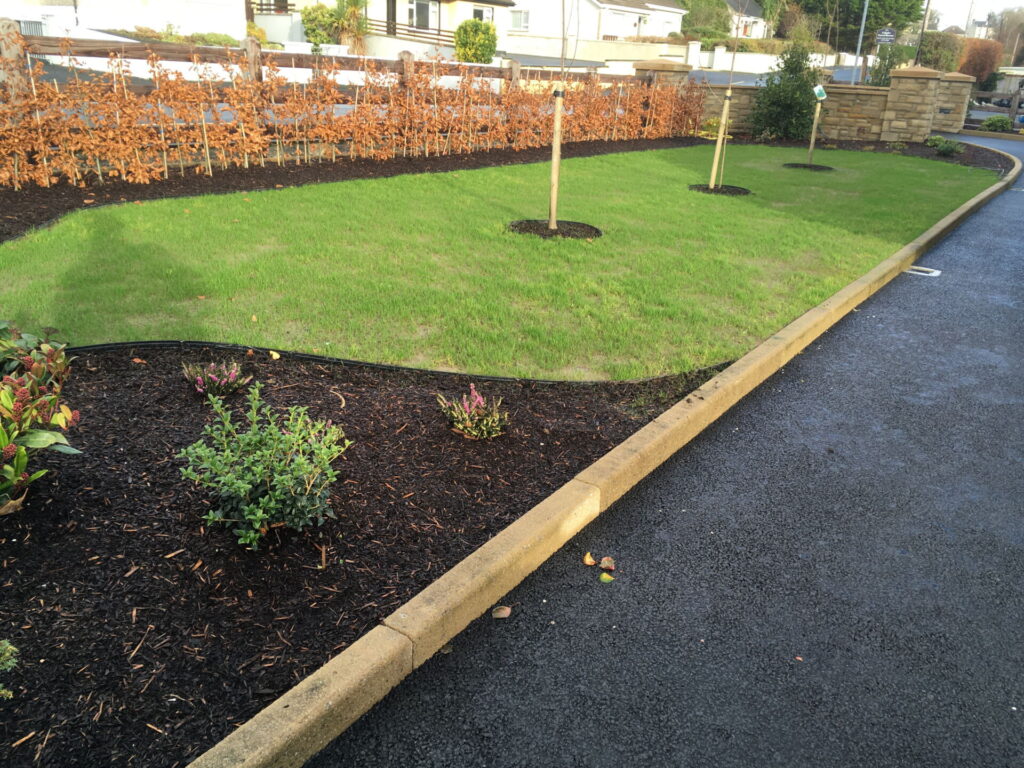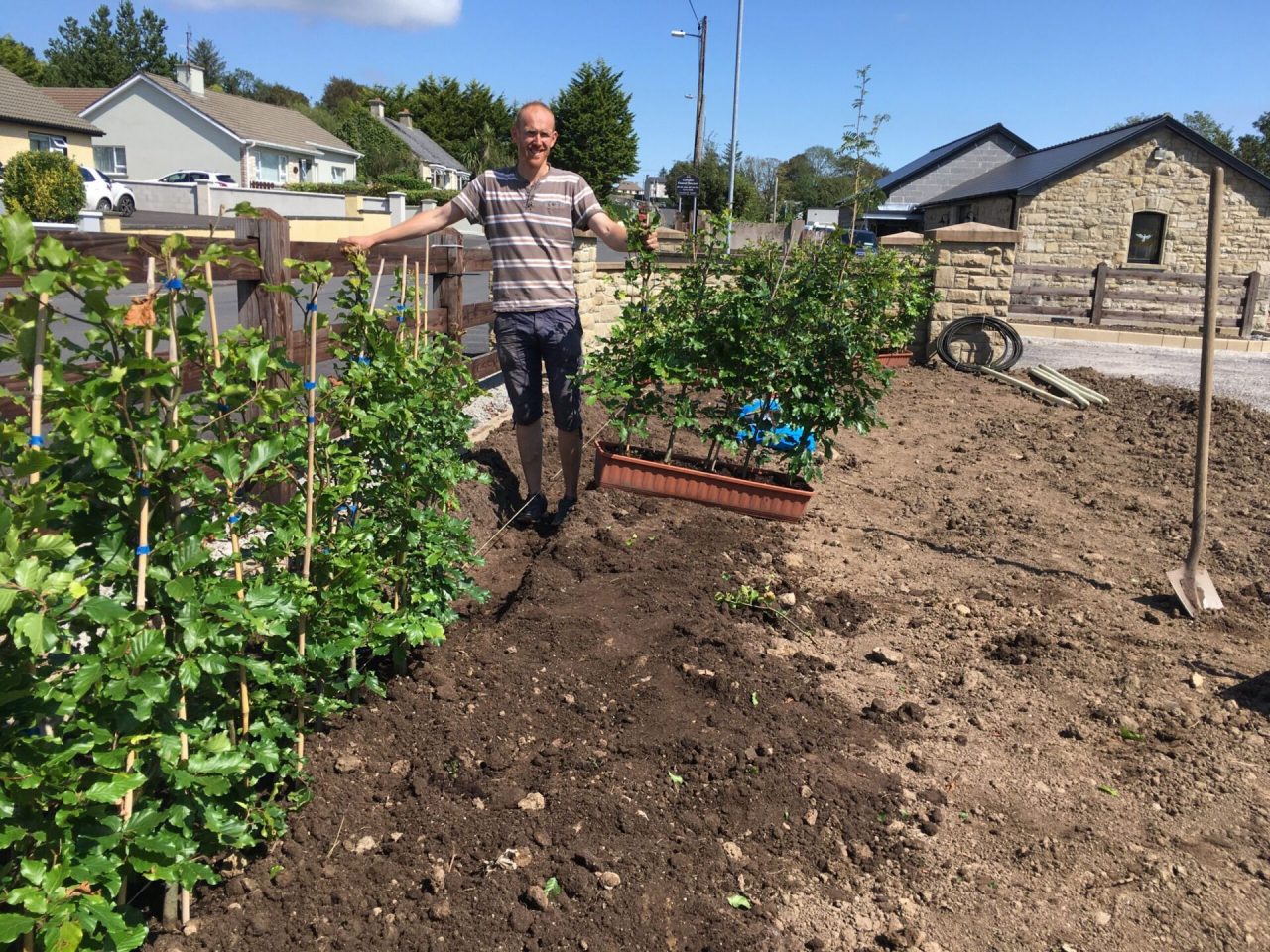This client had planted a beech hedge a few years earlier but it failed to grow. We were asked to visit to assess what went wrong. A small section of the hedge had thrived but the majority was struggling, looking weak and rather hungry. A survey of the site discovered the soil was of very poor quality so no matter how much this hedge was going to be fed it was not going to be successful in the long term.
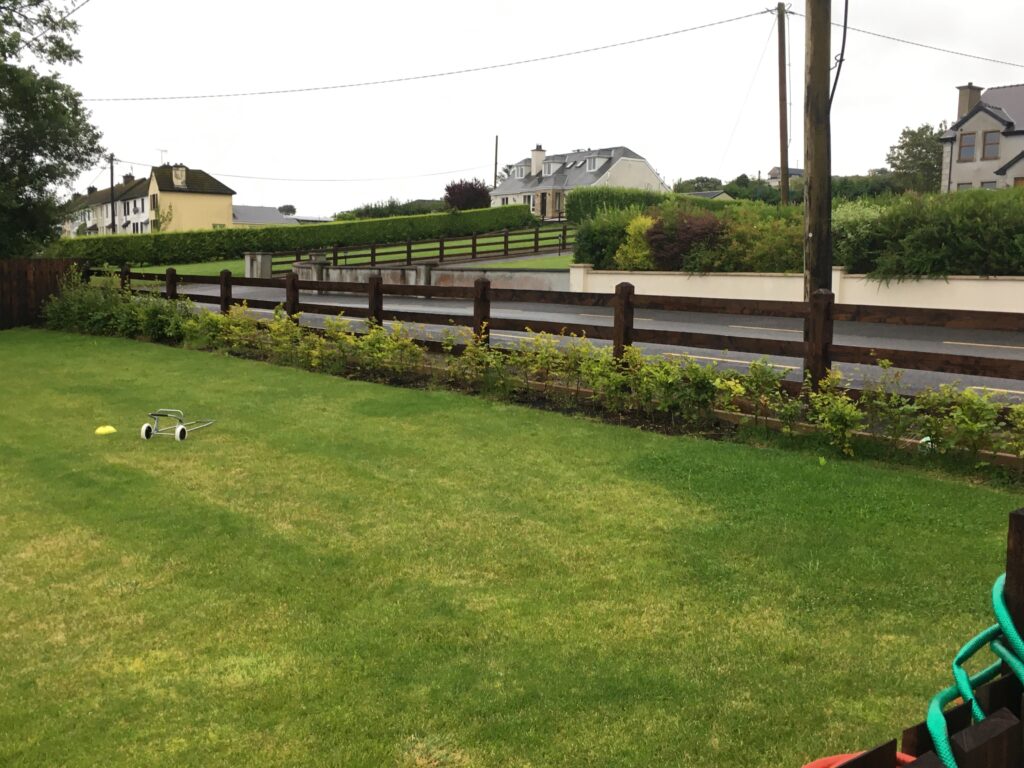
There was nothing else for it only to dig out a trench, add a drain and back-fill with good quality top soil. We dug a trench about 4ft wide and 18inches deep to accommodate this.
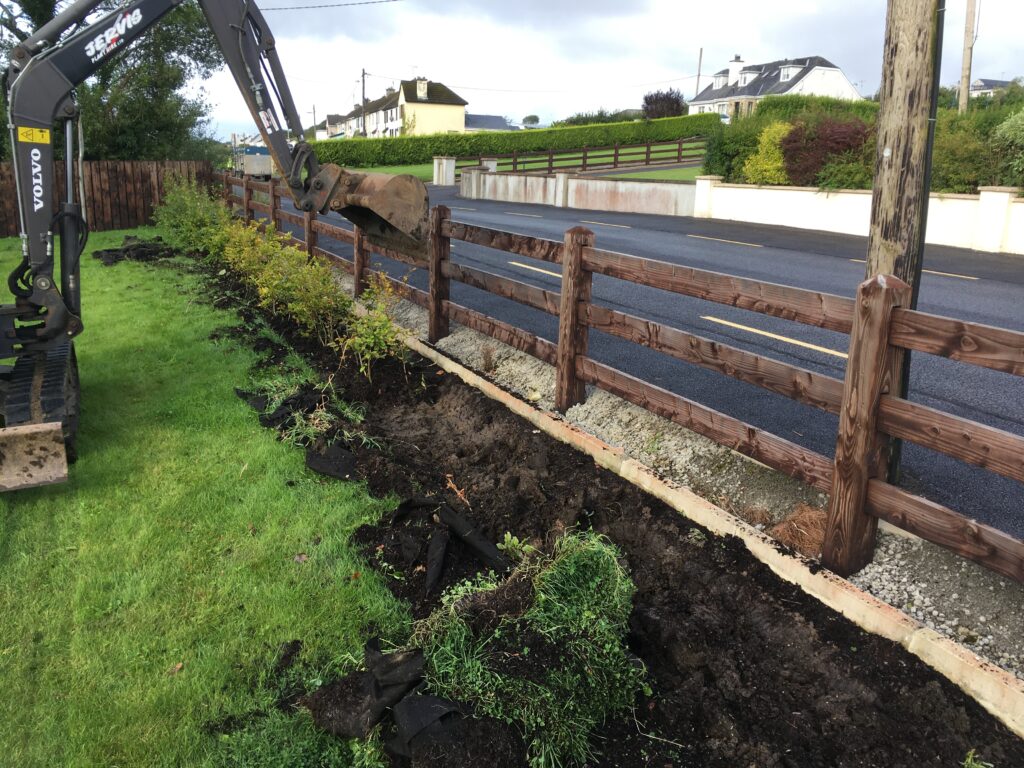
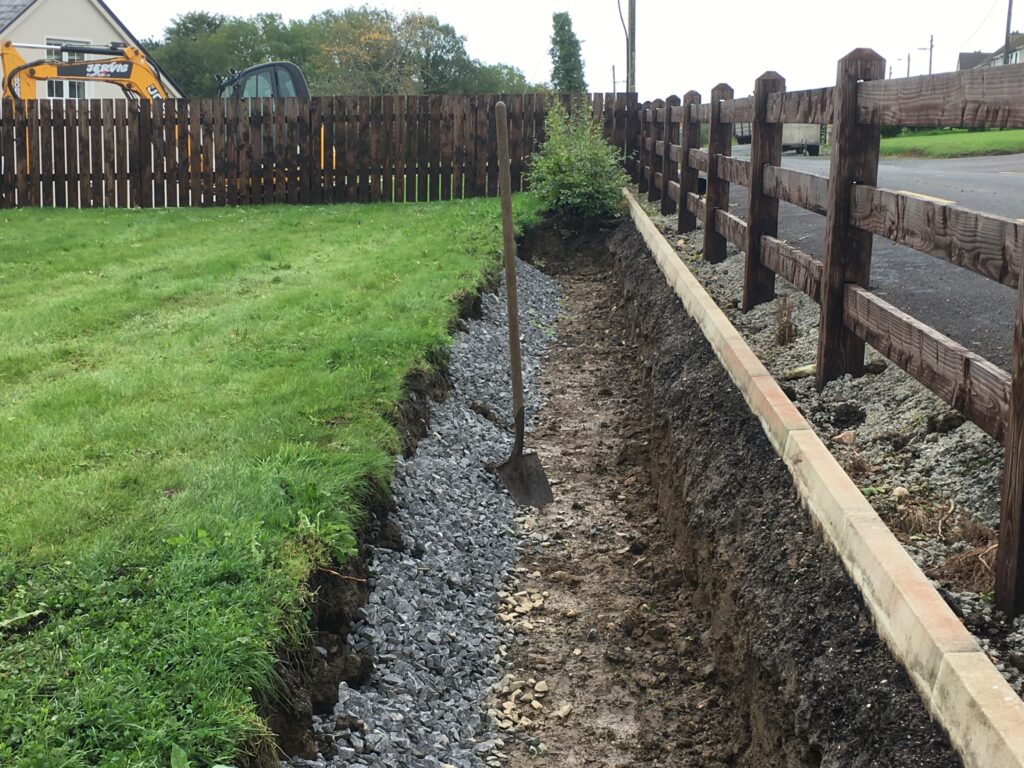

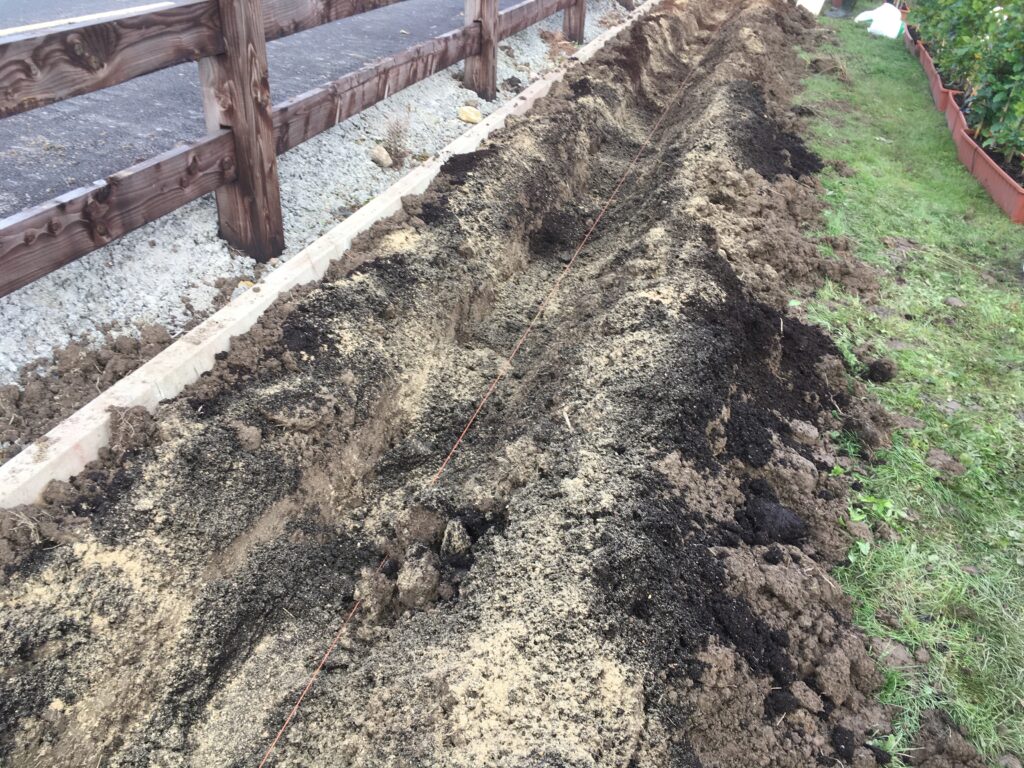
After marking out a line and digging a smaller trench to plant the hedge in, soil enricher and slow release fertilizer was mixed through the soil. It was now ready for planting.
The client could have used young bare root plants, however these would take five to seven years to make a good hedge. Instead, they chose an instant hedge the height of the existing fence. This gave the appearance of a well established hedge that had been planted several years ago.
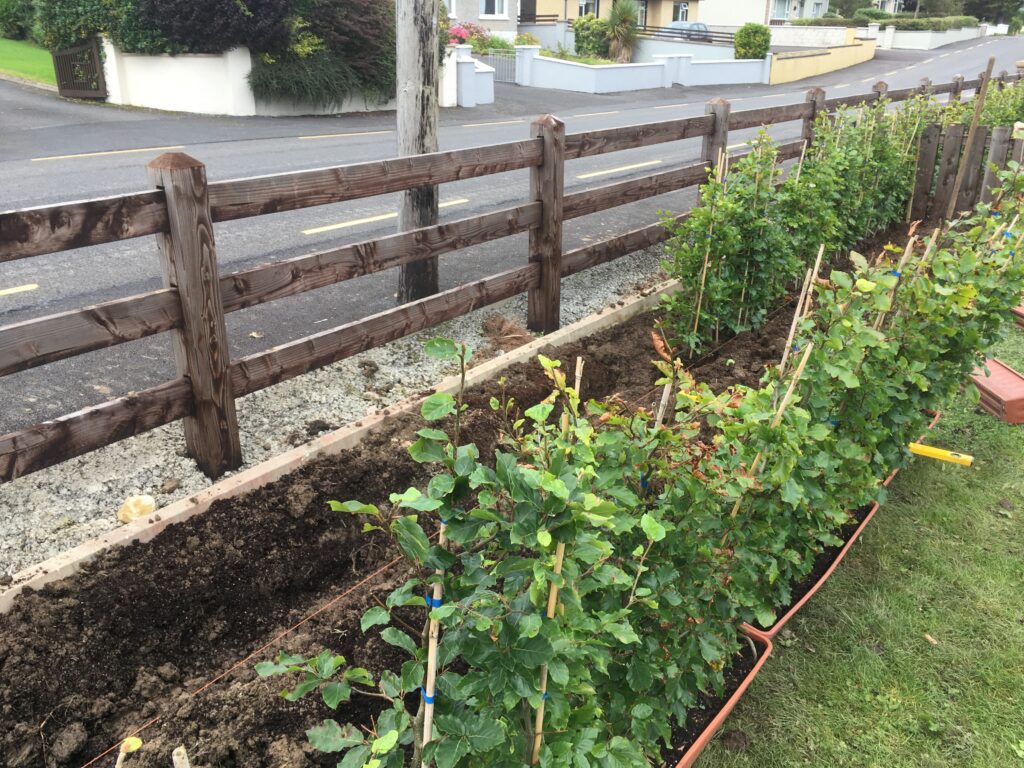
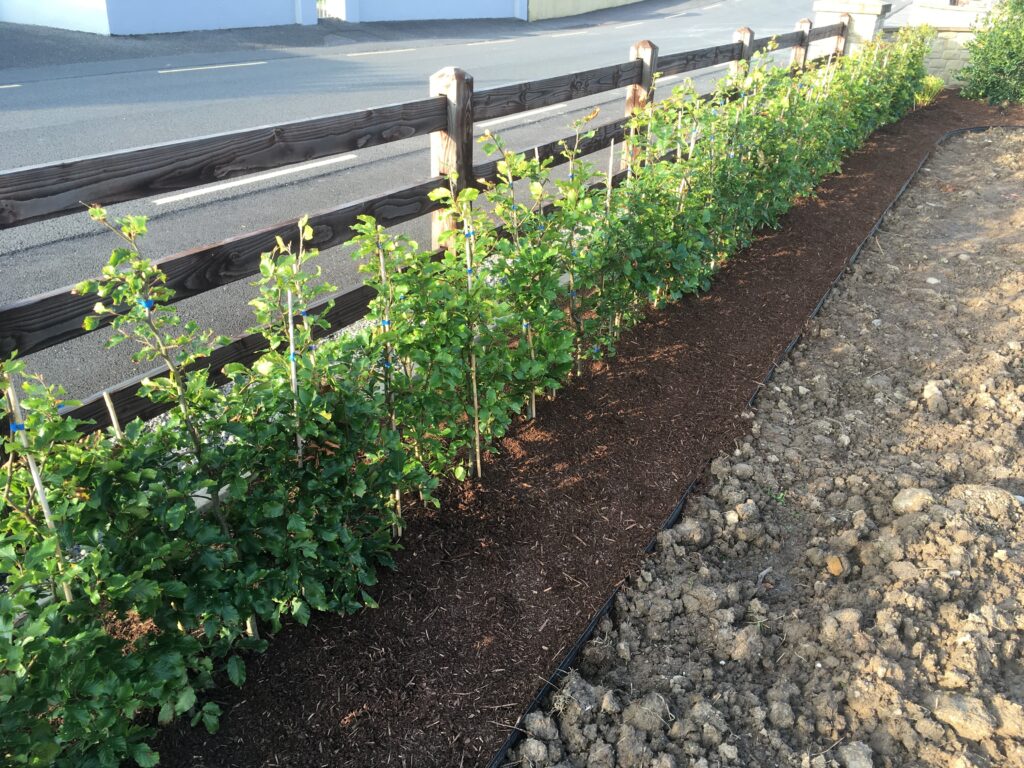
Bark mulch at a depth of 4-5inches was added to suppress weed growth and to help keep in moisture. A soaker hose was placed along the base of the hedge. This type of hose is full of little holes which allows the water to leak out slowly around the roots of the plants.
Aluminium edging was used to provide a clean line between a newly sown lawn and the bark. This helps prevent the grass spreading across onto the bark. It also provides a neat, clean edge which is simple to maintain. Once the lawn is established this edging becomes quite subtle and is only really noticeable on close observation. Aluminium edging can also be used to separate gravel paths from lawns.
